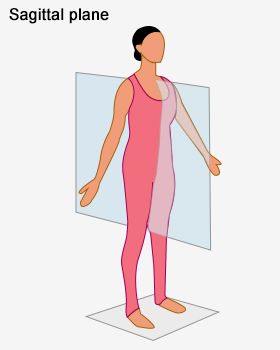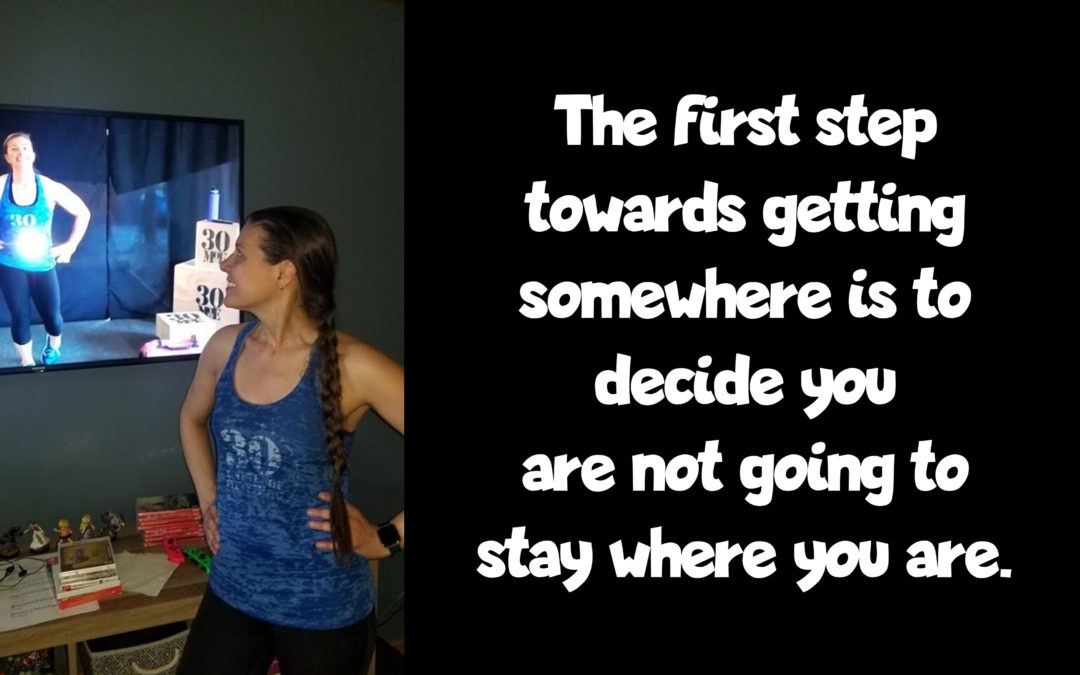You all know that this program progresses from week to week over the eight week period. Even if you’ve been coming here for 10 years (yay!), the program still progresses for your fitness level. I think that is really cool! Anyhow, one of the variables that we progress is the plane of motion. This is the area in space that you move in. As 3-dimensional beings, we move in 3-dimensions. Typical programs only train one dimension. Why? Most likely because that’s what they’re used to. Lucky for you, 30 Minutes of Everything isn’t typical! You train in all 3 planes of motion! Today I want to talk about the easiest, most common plane of motion – the sagittal plane.
The sagittal plane “cuts” the body into left and right. Obviously it’s an invisible line in the body, but the movement in this plan is forward and backward, flexing and extending. For example, a forward lunge takes you forward then back to the starting position in one straight line. Walking is also a sagittal plane movement. You are walking forward, swinging arms and legs forward and backward. This builds strength in that movement pattern – forward and backward. What happens when you are walking over rocks and you have to move left or right? Hmm. You’re not strong going left or right because you only train forward and backward so you probably end up on the ground. Not so practical.

Using equipment in a typical gym setting trains the sagittal plane of movement. Let’s think about the well-known leg extension machine. You are seated, knees bent, and a pad is in front of your shin and you have to straighten your legs. Fabulous – your quads get strong and highly defined. Let me ask you this . . . is there ever any movement in life where you are seated and kicking your leg out or using only quad muscles? Not that I can think of. Then why do gyms have these machines & why do people train on them? Because they are easier to isolate a muscle and people can usually lift more weight. It doesn’t mean they’re strengthening their body as it’s meant to work. You know that movement begins at the ground level and when you engage your feet into the ground, you are starting a neuromuscular reaction throughout your body. So, if you take your feet out of strength training then you’re not getting that coordinated muscle action that daily life requires. The body is integrated and connected – it doesn’t work in isolation. Strength training should reflect that connectedness. This is why training only one plane of motion doesn’t always make you a better moving human.
Our training should mimic the demands of our lifestyle. While the sagittal plane is the most basic and easiest plane to train in, we can still make it more challenging. How does this look over the course of 8-weeks in 30MoE? Let’s start with your basic bear hug squat. You are just going up and down holding the sandbag fully against your torso. Weight is balanced, feet are parallel, basic elementary skill. Hips are going forward and backward so it’s the sagittal plane. Without changing the movement pattern (the squat), we can change the intensity and neuromuscular demand by requiring other planes of motion to “respond”. Let’s put that sandbag on your shoulder. Now you’re unevenly loaded while doing a basic squat. You’re still working in the sagittal plane, but now you’re resisting motion in the frontal plane (side to side movement) and transverse plane (rotation). WOW! All we did was move the sandbag from your torso to a shoulder and now you are working all three dimensions, but still doing a squat in the sagittal plane! THIS is real life: working in one plane of motion while resisting motion in the other two.

